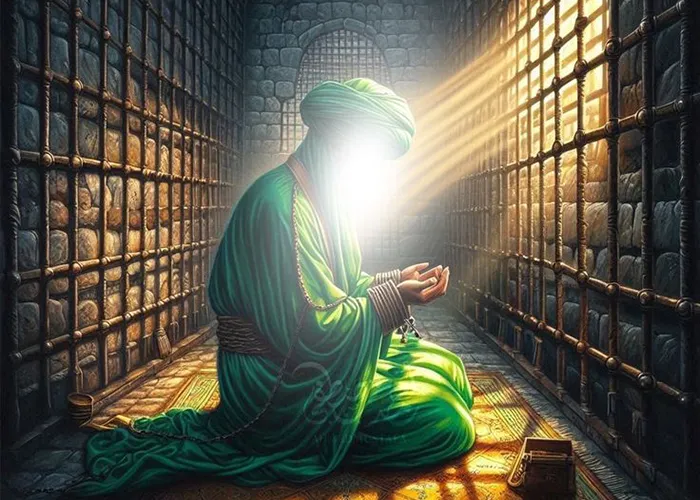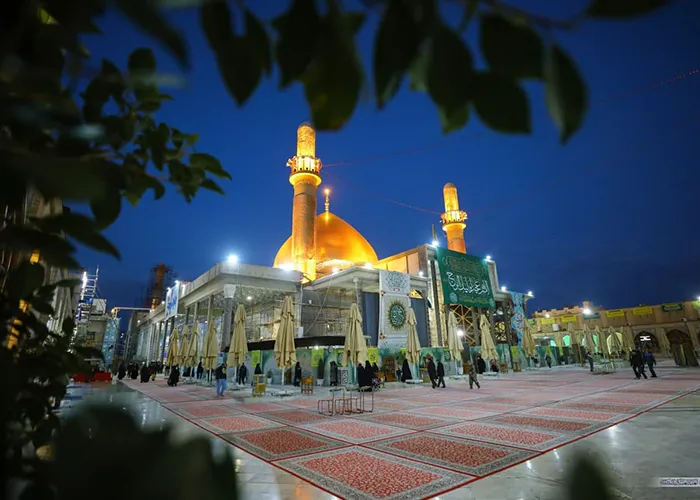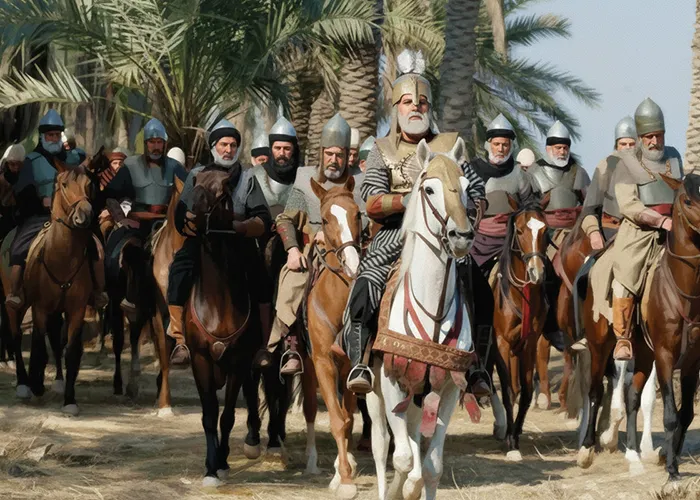Topic of the Week – Volume02 Issue40
Establishing a Model of Steadfastness During the Major Occultation, inspired by the Conduct of Imam Hasan al-Askari (peace be upon him)
Seyed Hashem Moosavi
Introduction
The significance of the blessed birth of Imam Hasan al-Askari (peace be upon him) on the 8th of Rabi’ al-Thani is not limited to merely the birth of an Infallible Imam (peace be upon him). Rather, it is a fateful turning point in the continuity of Imamate and the life of Shia Islam. The importance of this birth can be summarized in several key areas:
- Completing the Connecting Link: Imam al-Askari (peace be upon him), as the father and predecessor of the Imam of the Age (may Allah hasten his reappearance), is the intermediary link between the apparent Imamate and the hidden Imamate. Without his existence, the transfer of Imamate to the final Hojjah of Allah (may Allah hasten his reappearance) would not have been possible. Therefore, his birth paves the way for the birth of the saviour of humanity.
- Protecting and Introducing the Successor: One of the most important duties of Imam al-Askari (peace be upon him), under the severe oppression of the Abbasids, was to protect the life of Imam al-Mahdi (may Allah hasten his reappearance) and to introduce him to the trusted elite among the Shia. With utmost wisdom, he kept the sacred existence of the Hojjah of Allah (may Allah hasten his reappearance) hidden from the enemies, while at the same time, in a limited and calculated manner, introduced him to the senior Shia figures so that the matter of the subsequent Imamate would not be cast into doubt. The birth of Imam al-Askari (peace be upon him) initiated this critical mission.
- The Beginning of the Minor Occultation: The period of Imam al-Askari’s (peace be upon him) Imamate itself was a prelude to the Minor Occultation. The pressure from the Abbasid rule was so intense that the Imam’s direct communication with the people became very limited. This gradually prepared the Shia community for the era when their Imam would be completely hidden from sight. Thus, his birth marks the beginning of the period that leads to the age of occultation.
- A Source of Hope: The birth of Imam al-Askari (peace be upon him) and then the birth of his son, Imam al-Mahdi (may Allah hasten his reappearance), during the difficult time of house arrest and severe Abbasid surveillance, demonstrates the truth that Allah’s will is set on fulfilling His promises and no power can prevent the emergence of the final divine reserve. This event itself is a tremendous source of hope for believers in all ages, especially during the occultation.
The Historical Stature of Imam al-Askari (peace be upon him) in Preparing the Community for the Advent of the Occultation
Imam Hasan al-Askari (peace be upon him) assumed the Imamate in one of the most sensitive periods of Shia history. The Abbasid government, aware of the narrations concerning the promised Mahdi (may Allah hasten his reappearance) who is from the progeny of Imam Husayn (peace be upon him), intended to pressure Imam al-Askari (peace be upon him) to prevent the continuation of the line of Imamate. Under these circumstances, Imam al-Askari (peace be upon him), through his wise policies, prepared the Shia community for the unprecedented era of “Occultation.” This preparation occurred on several levels:
- Focus on the Network of Deputies (Wikala): Due to the severe restrictions, the Imam (peace be upon him) was not in direct contact with the masses. He strengthened and organized his network of deputies in various cities. This network, in addition to collecting religious funds and answering religious questions, played a vital role in establishing religious authority in the absence of the Imam, and became a model for “deputyship” during the Minor Occultation and later for the religious authority of the scholars during the Major Occultation.
- Emphasis on Clarifying Doctrines: Despite all the limitations, Imam al-Askari (peace be upon him), through letters and limited meetings, engaged in clarifying Islamic beliefs precisely, especially the issues of Imamate and occultation. Through enlightenment, he prevented intellectual deviations and built a solid foundation of beliefs for the Shia so they would not fall into doubt and confusion during the difficult period of occultation.
- Acquainting the Shia with the Concept of Occultation: The Imam (peace be upon him) gradually and through various means, familiarized the Shia with the reality that the next Imam might be hidden from sight. This ensured that the occultation of the Imam of the Age (may Allah hasten his reappearance) would not shock the community abruptly, as the intellectual and psychological groundwork had been laid beforehand.
- Direct and Indirect Introduction of Imam al-Mahdi (may Allah hasten his reappearance): As mentioned, Imam al-Askari (peace be upon him) confidentially introduced trusted individuals to his son, Imam al-Mahdi (may Allah hasten his reappearance). This introduction meant that after the martyrdom of Imam al-Askari (peace be upon him), a group of senior Shia figures would confirm the existence of the Twelfth Imam (may Allah hasten his reappearance), and the transfer of Imamate would be decisively established.
It can be confidently stated that without the management and guidance of Imam al-Askari (peace be upon him), the Shia community would never have been able to emerge successfully from the severe test of their Imam’s occultation.
Understanding the “Model of Steadfastness”: A Fundamental Necessity for Believers in the Era of Occultation
The era of the occultation of Imam al-Mahdi (may Allah hasten his reappearance) is one of the most sensitive periods in the history of Shi’ism; it is the age of the great test for the believers. It is an era where believers are deprived of the apparent presence of the Infallible Imam as the axis of unity and the reference for resolving all ambiguities, and they lack direct access to his unmediated guidance. Such conditions, both doctrinally and socially, give rise to questions and crises which, if not answered appropriately, will threaten the faith and identity of the religious community.
The occultation is not merely a physical absence; rather, it is a great test to measure the degree of faith in the unseen and loyalty to the divine covenant. In this period, some may fall into doubt or confusion, creating grounds for intellectual deviation or practical decline. Therefore, it is necessary for the community of believers to have a clear model of steadfastness on the path of truth to be able to withstand these challenges.
The necessity of this model can be seen in the following:
- Countering Confusion and Doubt: One of the greatest dangers of the occultation era is the emergence of “confusion.” Enemies, by raising various doubts, attempt to shake people’s faith. A model of steadfastness, based on strengthening the rational and traditional foundations of beliefs, immunizes the believer against these intellectual storms and teaches them how to overcome their doubts by holding fast to the Quran, the Ahl al-Bayt (pbut), and religious rationality.
- Responding to the Needs of the Time: Social, political, and cultural conditions are constantly changing. The model of steadfastness does not mean rigidity and stagnation, but rather “stability in principles and dynamism in methods.” This model teaches the believer how to adapt the fixed rulings and values of Islam within the context of the variables of modern life and to answer new questions.
- Preventing the Infiltration of Deviant Currents: The occultation may lead to social fragmentation and the infiltration of deviant currents. False claimants and opportunistic movements have always tried to exploit the conditions of the occultation and create internal divisions among the followers. In such an atmosphere, a collective roadmap for preserving cohesion, solidarity, and safeguarding Shia identity is an undeniable necessity.
- Maintaining Hope and Spiritual Vitality: The prolongation of the occultation may cause despair and hopelessness for some. The model of steadfastness, by emphasizing Allah’s definite promise about the reappearance, and by showing the effects of the spiritual presence of the hidden Imam (may Allah hasten his reappearance) in life (such as supplication and awaiting the relief), keeps the spirit of hope and movement alive in the believers. “Awaiting the Relief” is defined as the “most active state of the one who waits.” Furthermore, awaiting in the era of occultation, if not accompanied by the correct model, can lead to passivity and inaction, whereas religious teachings emphasize an active, hopeful, and constructive awaiting. The “Model of Steadfastness” is precisely the framework that can transform awaiting from a state of passivity into a dynamic and responsibility-generating movement; a model that calls believers to self-purification, righteous deeds, and social effort.
- Building a Resistant Community: The model of steadfastness is not merely an individual matter, but a social project. This model teaches the community of believers how, while preserving their religious identity, to resist the cultural invasion, political pressures, and soft war of the enemies, and through internal unity and cohesion, pave the way for the reappearance. Strengthening a resistant economy, cultural independence, and unity of word are examples of this model.
In fact, the “Model of Steadfastness” is a comprehensive strategy derived from the conduct and teachings of the Infallible Imams (peace be upon them all), particularly the preparatory period of Imam al-Askari (peace be upon him) and the concept of awaiting in the era of occultation. It provides the believer with a roadmap not only to remain safe in this tumultuous era but also to continue their growth and perfection, and to prepare as a true soldier for Imam al-Mahdi (may Allah hasten his reappearance).
From this perspective, re-examining and explaining the model of steadfastness in the era of occultation is not a purely historical discussion, but a strategic necessity for today. The religious community, facing new challenges – from secularism and the crisis of spirituality to media and cultural pressures – still needs the same framework that Imam Hasan al-Askari (peace be upon him) designed and established for the steadfastness of the Shia during the occultation.
On one hand, he stabilized faith in the Divine Proof by gradually introducing Imam al-Mahdi (may Allah hasten his reappearance), and on the other hand, by organizing the network of deputies and emphasizing referring to the Quran and the Sunnah, and directing religious affairs to qualified jurists, he prepared the Shia for the conditions of not having direct access to the Imam.
The conduct of Imam al-Askari (peace be upon him) not only addressed the crises of that time but also stands as an enduring model for the entire period of the Major Occultation. Re-examining and explaining the components of this model can, even today, illuminate the path for the community of believers to preserve their steadfastness and cohesion in the face of the intellectual, social, and ethical challenges of the modern era.
In conclusion, we point out some of these components:
- Strengthening faith in the unseen and trust in Allah’s promise.
- Accepting the Divine Hojjah (may Allah hasten his reappearance), even from behind the veil of occultation.
- Referring to the Quran and the Sunnah in the absence of direct access to the Imam.
- The role of jurists and scholars as the continuation of the path of guidance.
- Preserving the unity and cohesion of the Shia community.
- Guarding against the infiltration of deviant ideas and false claimants.
- Patience and forbearance in the face of difficulties.
- Self-purification and righteous deeds as a means of paving the way for the reappearance.
editor's pick
news via inbox
Subscribe to the newsletter.




